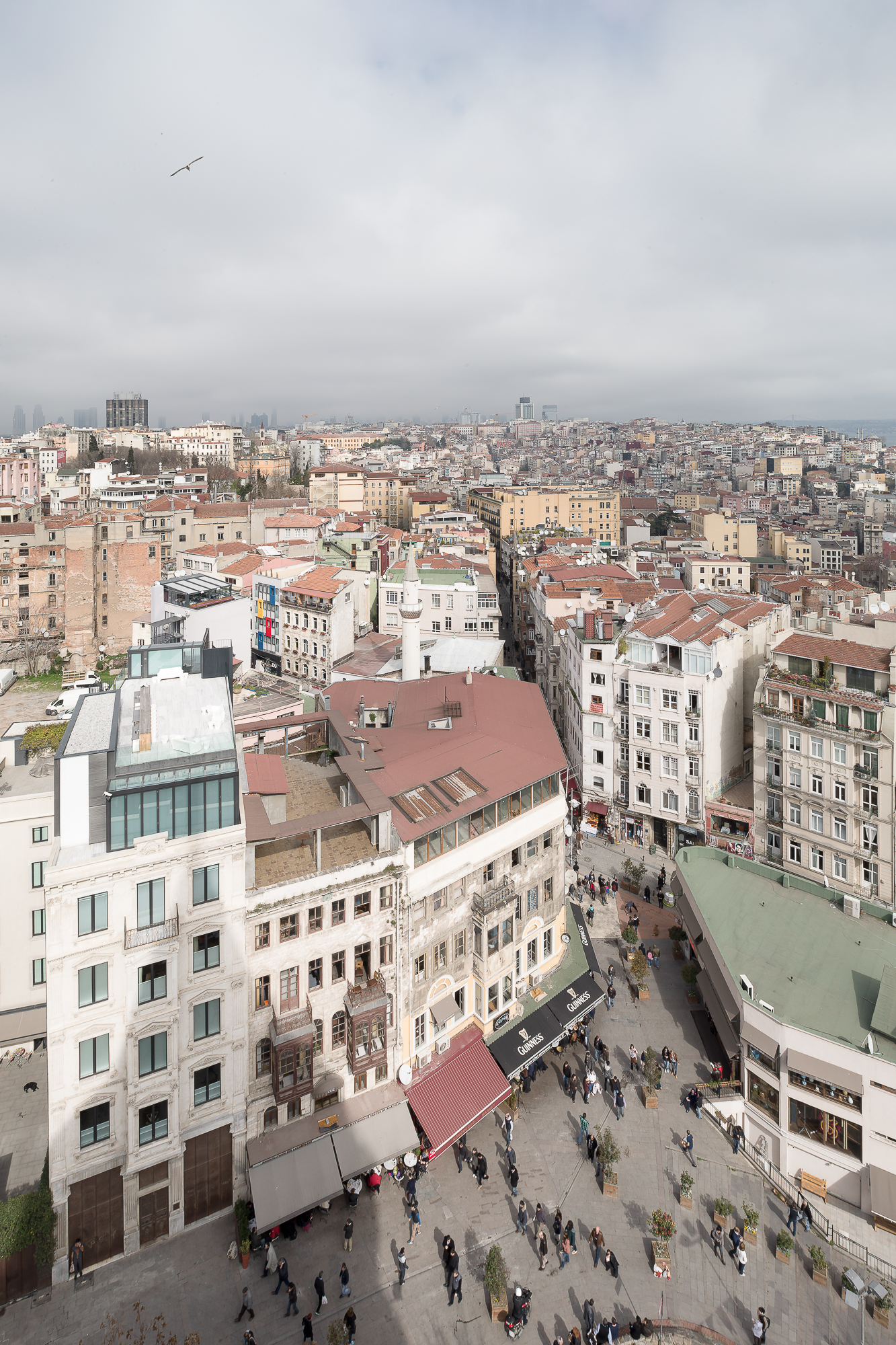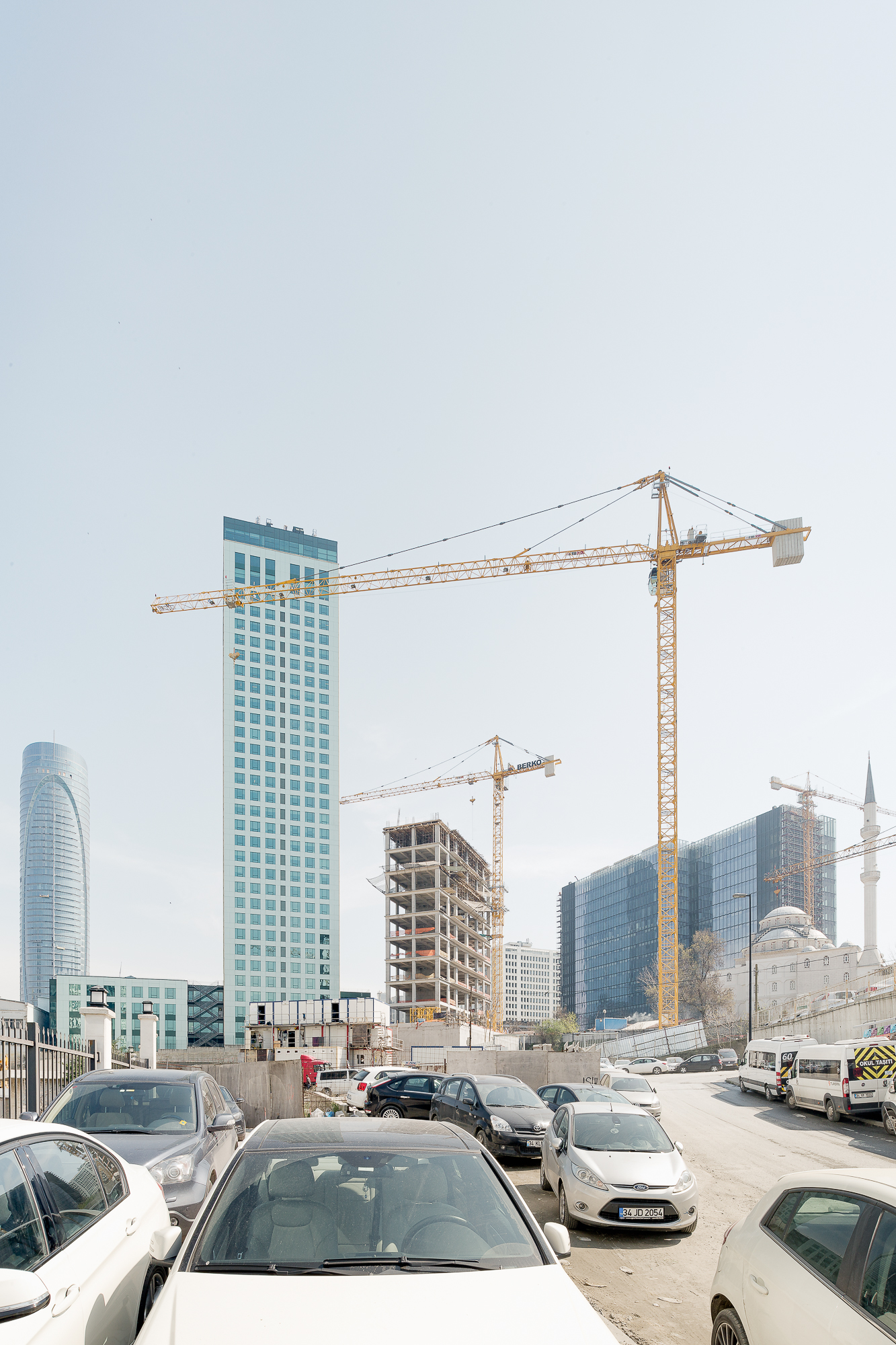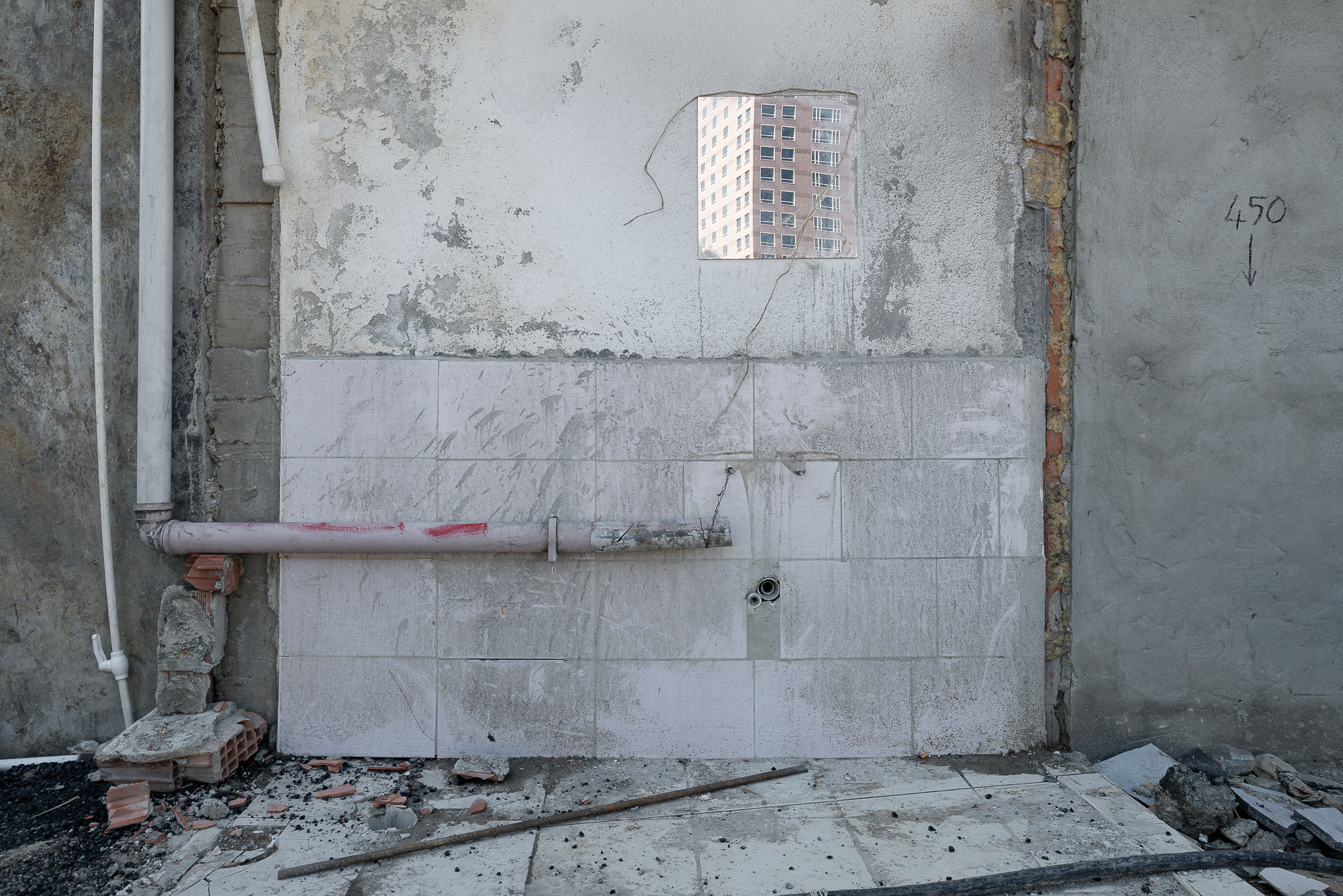
Yeni İstanbul
Prosperity and security are the promotion labels of the new Istanbul. What is withheld, however, is the fact that the Turkish economy is very much built on credit, fueled by billions of dollars of subsidy from abroad. Everywhere within the city building projects are finished hastily. Immense infrastructural projects dig deep into the topography and affect the urban as well as the social fabric that has evolved over time. Since 2014 the Bosphorus can be crossed underground by rapid transit railway within a few minutes. Whole new stretches of land are reclaimed from the Marmara Sea. A new metro bridge crosses the Golden Horn connecting the Byzantine heritage in the south to the growing business districts in the north. The inner-city railway network is planned to grow by more than 400 kilometers by the year 2019. A new and even bigger airport shall be built. The metropolis strives for a global future.
New super malls with their own subway connection and everything to fulfill any consumer's desire resemble cities within the city. Skyscrapers grow out of the dense fabric of the mahalle. Residential and commercial property is being developed by international standards – buildings, that could be anywhere in the world. Symbols of the power of capital. The city becomes more complex and at the same time more proprietary – public space gradually becomes partitioned, privatized and monitored. Recently erected residential districts guarded by their own security service appear as walled fortresses.
The minimization of public space stokes social tensions. In 2013 the plans to redevelop the area of Gezi Park next to Taksim Square triggered massive protests among the population, which attracted international attention. Who owns the city? Who is allowed to use it and how? Is the right to the city becoming a right of the privileged?




























